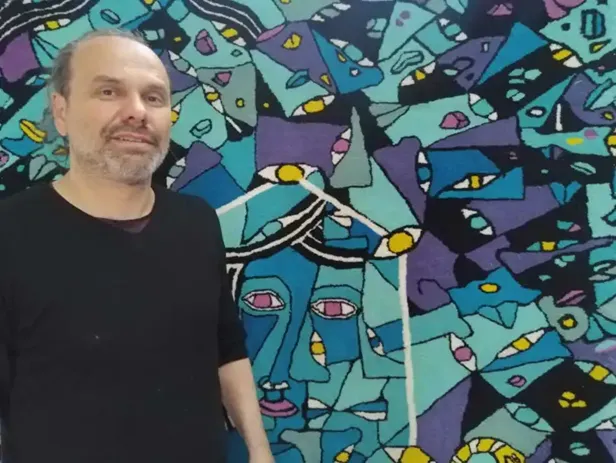The advent of blockchain, the blockchain of Bitcoin, has brought great innovations, in all fields: distributed ledgers have opened up the real world to true traceability.
When we had the breakthrough with the Ethereum blockchain and the inclusion of smart-contracts, gradually all other blockchains aligned and nowadays all blockchains give the possibility to use smart-contracts.
These smart-contracts have given the ability to create new types of tokens, including NFTs (Non-Fungible Tokens).
Why did these tokens provide the breakthrough?
Because they are unique and non-interchangeable so these tokens can uniquely represent any asset.
In fact, the economic future of the world, is geared toward a massive implementation of this token, through what is called TOKENIZATION.
Tokenization is the digital identification of any asset (potentially) split down into major units. To understand it, we could represent a building by matching each square meter of commercial area with a token.
The extraordinary aspect of this operation is the unambiguous proof of ownership; in fact, the token purchased, is registered on our wallet, and we will always be able to prove ownership, as we are the owners of the private keys of the wallet.
Remember the phrase, Not your Keys, Not your Money?

Source: https://lynxartcollection.com/products/not-your-keys-not-your-coins-cryptocurrency-pop-art
The big possibility here extraordinary is creating liquidity on assets that would be otherwise defined "illiquid".
The fields of application of this technological operation are the most varied, starting from real estate to the representation of financial products, passing through works of art.
Real estate
Real estate is the one that pioneered the implementation of tokenization, let's see how.
Real estate is an asset with 0 liquidity. In order to take advantage of the returns a property can provide, we must own it, or, if we don't have sufficient liquidity, we must be co-owners.
In order to tokenize a property, we take the sq. m. as the "genesis unit," and each sq. m. is assigned an NFT. In this way, the property is divided into many small portions that can produce income.
The most important implication we have in the area of access to investment; in fact, any person who has a cryptographic wallet can access the purchase of one or more NFTs and can reside anywhere in the world: the blockchain does not care!
In one operation we have broken down two limitations that real estate has: accessibility and borders. That is why tokenization can become a huge development.
Of course it remains in the responsibility of the buyer to follow all the procedures to be a responsible citizen by declaring the properties held.
I reiterate that the democratization rendered by blockchain should by no means be seen as a ploy to bug the state by evading taxes, it should be a facilitation of access to investment.
I personally participated firsthand in a rather complex and articulated real estate tokenization by the startup UniRealChain, where I offered my professionalism in arranging the tokenomics and Strategic Consultancy during the Go-To-Market phase.

Source:Unirealchain.com
In real estate, tokenization can have the dual function of crowdfunding or investment, depending on whether the property is under construction, or is already productive.
Works of art
Another very important aspect of tokenization is the representation of artwork (I'm not talking about the creation of NFTs containing meaningless "doodles").
Allow me a sophistry: now NFTs do not need a reverential awe, however, it seems to me that a note should be made to all speculators who impregnate memory on the blockchain by exploiting NFTs for futile uses.
To represent a work of art with an NFT or a series of NFTs is to certify the ownership of the work; both of the artist and the buyer.
As you know, here where I reside, I am in contact with a local painter who has a very liquid view of the real world, in fact the chat we had was extremely enlightening.

Source: Rossano Ferrari
Being on the same wavelength, when he expressed his vision to me, I immediately proposed to him to transform his works into NFT: hence a beautiful collaboration was born, Real World/Digital World!
With Rossano Ferrari, we transferred all his works into NFT, this was when ETH 2.0 blockchain had not yet been implemented: I studied all the phases of the day to understand "human" blockchain fees. The ideal time was between 4 a.m. and 6 a.m. (CEST-zone).
Here is another NFT-portfolio I am ultimating in these days, of Samantha a young aspirant artist from Verona:
https://rarible.com/samanthaceraldi
She has also created the shop with her NFTs as we thought it could be a potentially profitable business line:
https://supersamy.myshopify.com/
In this case, that of artworks, tokenization is also used to uniquely certify ownership and make commercial-rights more accessible and exploitable from everybody.
Financial Assets
As for the financial sphere, I don't completely agree with the use of tokenization because I see it more as digitally tracing what exists financially, without making an ameliorative impression of the situation.
Take, for example, NPLs (Non Performing Loan) known as impaired loans. Financially they are based on a debt and not a receivable, what's more, they are also of doubtful collection.
With tokenization, how can we put a positive spin on this type of asset?
In my opinion, you increase the pool of investors by increasing the possibility of loss for those investors who do not have enough mastery of the subject matter.
Tokenization is a great form of innovation brought by cryptocurrencies+blockchain.
I recently held a part of a deep course for an Italian school about NFTs and tokenization has been exactly the first concept I introduced to explain it.

I am now also watching over a project on the tokenization of music and I will keep you posted on the developments.